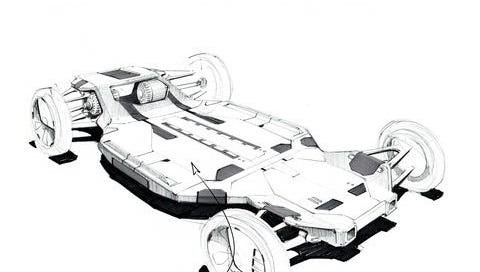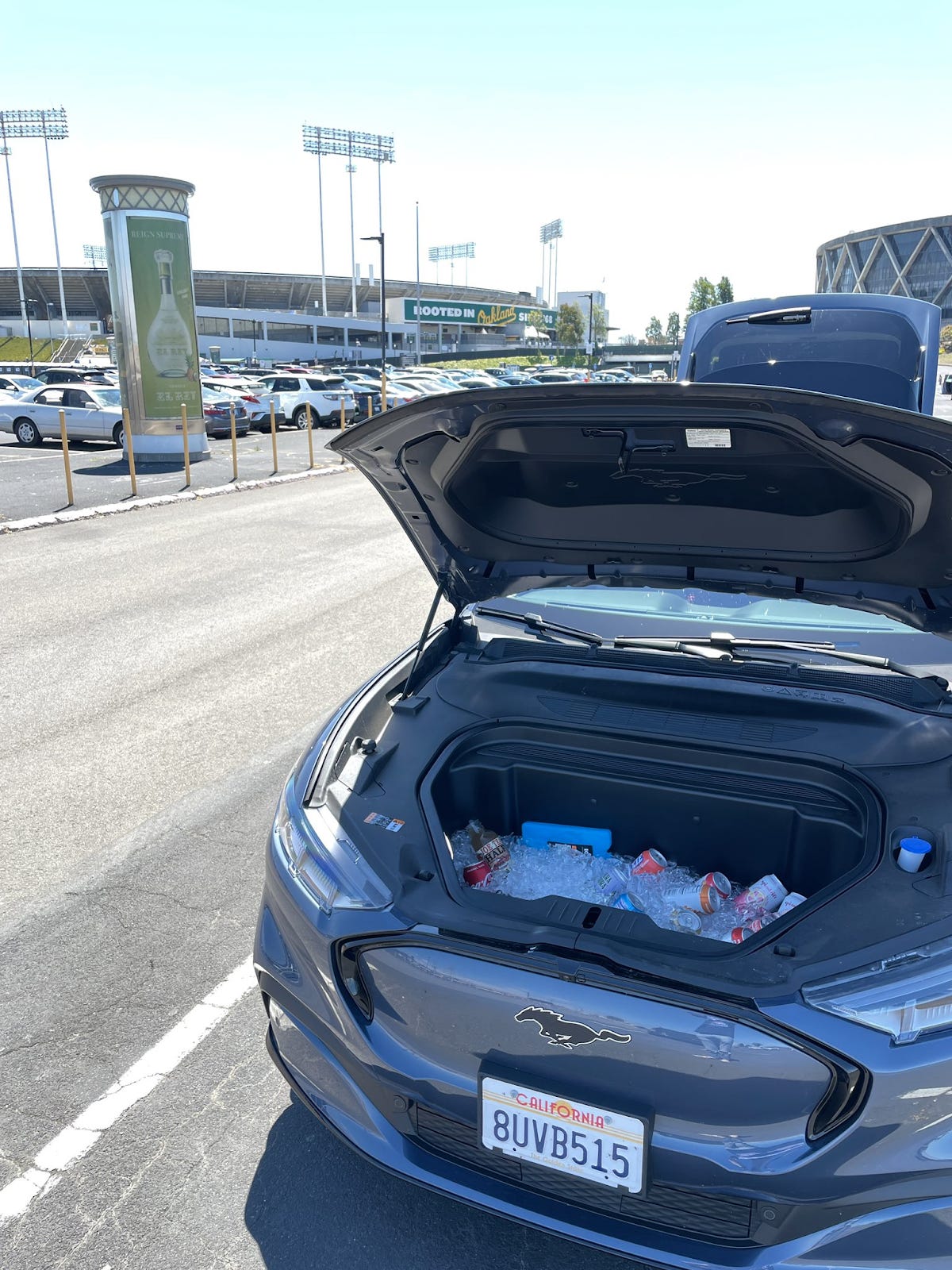Noah here. Beyond the environmental impact of electric vehicles (EVs), there’s a fascinating design story that will likely be told over the next decade as car manufacturers leave behind the physical requirements of internal combustion engine (ICE) cars. Electric cars replace fuel tanks with batteries and engines with motors. And while these components obviously need to be placed on the car, it opens up a whole new world of design possibilities.
For the most part, however, we haven’t seen these aesthetic changes yet. That’s mainly because most early electric vehicles were built atop a “platform” originally designed for ICE cars. From Car and Driver this month:
Many early EV ventures used existing platforms and arranged electric powertrains to fit where gas engines and transmissions had previously resided. Even Tesla's first attempt was a revamped Lotus Elise without its 1.8-liter inline-four. Working on a nondedicated, or "nonnative," electric platform limited designers' options for positioning the battery and motor. Automakers often stacked batteries under the rear seat—which is why early EVs sometimes offered less legroom or cargo space than their gas counterparts—and put the motor assemblies under the hood. Even the Nissan Leaf, which packages an underfloor battery in a dedicated EV platform, still follows the old philosophy of carrying a motor where an engine normally goes. Aesthetically, too, the early electrics couldn't break away from distinct grille shells and large air vents.
Layer on the fact that many early EVs felt the need to “look electric,” and you get a market that largely hasn’t been pleasing to the eye.
Why is this interesting?
While car design is still subject to the realities of aerodynamics, we’re starting to see new visions emerge. Big car manufacturers like Ford are fully committing to electric and introducing new platforms that were built from the ground up for batteries and electric motors instead of gas engines. These new cars don’t feel the need to broadcast their green credentials with strange bulbous shapes and ugly aerodynamic elements like wheel covers.
Illustration via Car and Driver
There are obvious rethink opportunities, such as having no need for a giant air-cooled engine in the hood of the car. As WITI contributor Ryan McManus showed off recently, that space can now be used for keeping your beers cold at a tailgate. Then there are also far more imaginative designs, such as Rivian’s tunnel, which runs perpendicular through the truck and can be used for storage or augmentation by attaching something like an induction stovetop for camping.
But one of the biggest opportunities for rethinking the car in the electric age is how the interior is shaped. Here’s Car and Driver again:
Escaping the tyranny of the center tunnel is exciting to many designers. Imagine trying to decorate a room with an undulating hardwood floor. Furniture would be pushed to the side, with the center of the space unusable. In cars, designers regularly hide the hump with a shallow console in the front; in the back, they simply cover it with carpet and ignore it. But now that they can smooth out that hump, there's a lot more room to play with. Köhl's team on the EQS used this newly available real estate for an elegant multilevel console with room for a large bag in a pass-through by the driver's knee. In Hyundai's new Ioniq 5, which rides on the Electric Global Modular Platform (E-GMP), the space is left open, giving driver and passenger the opportunity to bump knees romantically at stoplights, although that's not in the press literature. The flat floor also allowed Hyundai designers to put in a deep console that slides rearward so front-seat occupants can enter or exit from either side of the car.
We didn’t notice it so plainly, but engines shaped the way cars look for decades: the powertrain became the car’s real chief designer. We are most likely in a transition period where car designs will continue to look familiar enough to not scare away first time buyers. But as the market matures, the aesthetics will change as a new era of car designers work from first principles once again to build 21st-century vehicles. (NRB)
Quick Links:
Thanks for reading,
Noah (NRB) & Colin (CJN)
—
Why is this interesting? is a daily email from Noah Brier & Colin Nagy (and friends!) about interesting things. If you’ve enjoyed this edition, please consider forwarding it to a friend. If you’re reading it for the first time, consider subscribing (it’s free!).




